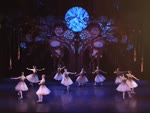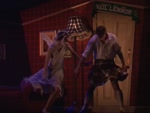HERE AND THERE IN FUKUSHIMA
Full length video
Please read Understanding catalogue records for help interpreting this information and Using footage for more information about accessing this film.
Title: HERE AND THERE IN FUKUSHIMA
Reference number: 12504
Date: 2015
Director: d. Yushin Toda
Production company: Japan Desk Scotland
Sound: sound
Original format: unknown
Colour: col
Fiction: non-fiction
Running time: 47.45 mins
Description: Japan Desk Scotland’s third documentary about the Fukushima nuclear accident in 2011, looking at the aftermath in the area around Okuma Town, the remaining effects of radioactive contamination, and the area's subsequent reputation in Japan.
Credits:
p. Fumi Nakabachi and Yushin Toda, Japan Desk Scotland
comm. w. Yushin Toda
ph. Fumi Nakabachi
ed. Yushin Toda
m. the participants at Taiko Fun Workshops run by Japanese Matsuri for Glasgow (Brenda, Bryan, Carolyn, Claire, Fumi, Katie, Kyoka, Laura, Mariko and Susanna)
Shotlist:
Filmmaker's Synopsis:
This is Japan Desk Scotland’s third Fukushima documentary, based on the interviews carried out in July 2014.
Kencho Kawatsu, Fukushima University, takes Japan Desk Scotland to Okuma Town, the town that has the troubled Fukushima Dai-ichi Nuclear Power Plant, together with Futaba Town. The majority of Okuma Town is designated as ‘Difficult-to-Return’ zone, where nobody is allowed to stay, leaving the houses empty. Entering the zone, there is a Temporary Storage facility to store the radioactive topsoil removed as part of decontamination work. The zone is regularly patrolled by ‘Okuma Dad’s Army’, a group of retired Town officials.
Hirofumi Tsukada, who joined Fukushima University after the accident, has an experimental plot in Okuma Town. Okuma’s soil recorded higher than 10,000 Bq/Kg of radio caesium, but the crops harvested in the plot recorded less than 100/Bq/Kg, the limit of radio materials in general foods in Japan, due to a unique quality of Fukushima’s soil absorbing radio caesium. Miyuki Sasaki, a Masters’ student at Fukushima University, analyses this absorbing power of the soil so that the volume of radioactive topsoil removed and stored in Temporary Storage can be reduced.
Fumiko Goto, Professor of American Literature, Fukushima University, compares the situation in Japan with the one in the 1950s America with Film Noir and McCarthyism, where people’s fear of something incomprehensible was exploited. People or foods from Fukushima are seen as something incomprehensible by people in Japan, and this may lie behind the unpopularity of Fukushima foods even when they were tested under 100 Bq/Kg.
At the time of the nuclear accident, Fukushima university had neither a research group on nuclear issues nor facilities, but the Institute of Environmental Radioactivity was established in 2013. A researcher from Ukraine at IEA and a visiting graduate student from Colorado State University are interviewed together with Fukushima University students.
Interviewees (in order of their first appearances):
Kencho Kawatsu, Kensei Sekiguchi, Hisatomo Suzuki, Makoto Matsueda, Hirofumi Tsukada, Miyuki Sasaki, Olena Pareniuk, Kenji Nanba, Mayuko Noda, Yoshitaka Takagai, Fumiko Goto, Jennell Parson, Yusuke Suenaga, Hiroki Saito, Masahiro Endo and Satoshi Tachibana.






